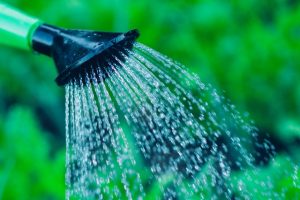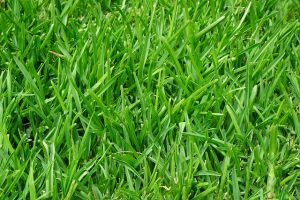Summer lawn care is all about shepherding your lawn through the high temperatures and lack of rain during the hottest months of the year. It’s not the time for planting, or fertilising, or doing anything proactive. It’s about maintaining and protecting the grass so that your patch of turf makes it to autumn in excellent condition.
After the busy growing season of spring, this may sound like a relief, an easy time in the garden. But we expect a lot from our lawn in summer – the barbecues, the backyard cricket, the kids running around on it – so keeping a close eye on it and helping it through the harsh Australian summer is nothing to be scoffed at. Here’s what you need to know about caring for your lawn in summer.

Watering
- The general rule of thumb is that lawns need 3cm of rain per week, more during extreme heat. It’s a good idea to keep a rain gauge or some kind of measuring container to measure how much your lawn has received so that you know it’s getting enough.
- To encourage deeper roots and therefore greater drought tolerance, it’s best to water deeply once a week rather than little bits each day.
- If your lawn goes brown and dormant, don’t try to water it back to life. Accept that it’s out for the season and wait for it to recover when autumn rolls around. Trying to ‘water it back to life’ is an uphill battle that’s bad for the health of your lawn in the long run and is a waste of precious water.
- Water early in the day whenever possible. Not only does it reduce evaporation rates because the sun is not yet at its strongest, it’s better for your lawn than watering in the evening. Evening watering can lead to fungal growth.
- Use a wetting agent to keep your soil absorbent and maximise the efficiency of your watering.
Mowing
- Your mower height should be raised in summer as taller grass grows deeper roots which is better for drought resistance.
- Cool season grasses should be mowed at about 8cm-10cm high (or as high as your mower blade will go) and warm season grasses at about 5cm-8cm, depending on the variety.
- Try not to use a catcher bag on your mower – the mulching effect of the grass clippings helps to keep moisture in.
- Mow regularly enough to not be cutting more than 1/3 of the grass blade off at any one time. This is not only healthier for the grass but it keeps your clippings at a manageable length that doesn’t smother the grass.
- Make sure your mower blades are sharp. Dull blades damage the leaf which causes the grass to spend precious nutrients trying to repair itself. You do not want to stress your grass out during an already stressful time!

Fertilising
- Don’t! Wherever you can, do not fertilise in summer.
- Fertilising in the hot months can burn your lawn. Even if it does work and a flush of new shoots pop up, it’s a hard time to be a weak, new sprig of lawn trying to establish in the middle of a harsh Australian summer. Summer is not the time for new lawn. The odds aren’t good for survival, or healthy survival at that.
- Try to apply your last bit of fertiliser a month before summer really hits.
- If your lawn has gone dormant, much like with watering, don’t fertilise it. Wait until autumn.
Weeding
- A good mowing schedule should keep the weeds down especially if that nice clipping layer is covering the lawn well.
- It’s important for future seasons to remove any summer weeds before they bloom and spread seed that will lay dormant until next year. Get on top of it so that you don’t perpetually have summer weed problems.
- Post-emergent herbicides can be damaging to lawns that are already under stress. So, if the heat is above 30 degrees, don’t use a herbicide. Your lawn will be struggling with the heat without having to then fight off a herbicide too. This is true even for targeted herbicides which are designed to not harm the turf.
- Unfortunately, this means that summer lawn care best practice dictates hand-pulling weeds. It’s tedious, but it’s best for your lawn.

 FREE SHIPPING ON ORDERS OVER $50
FREE SHIPPING ON ORDERS OVER $50